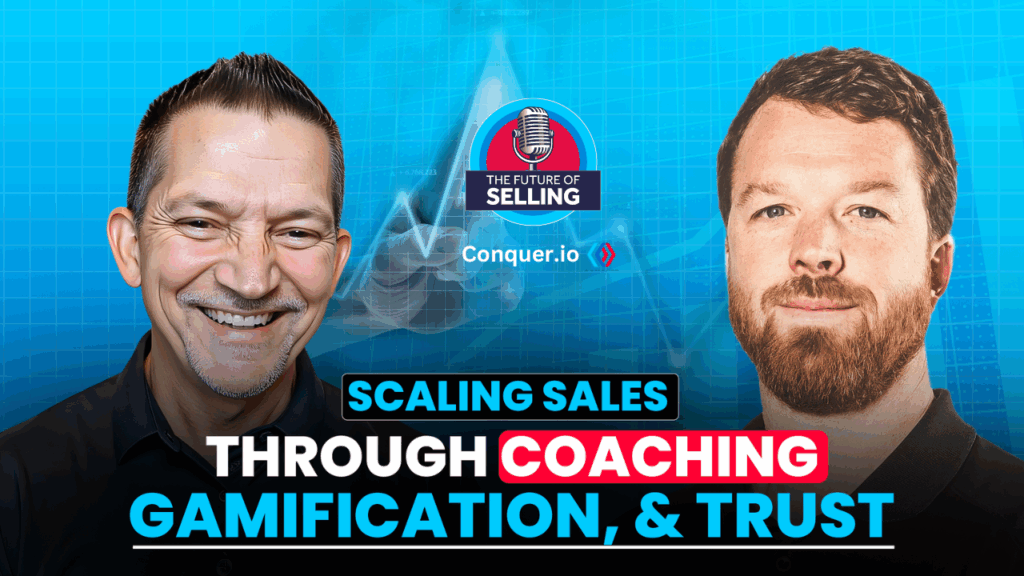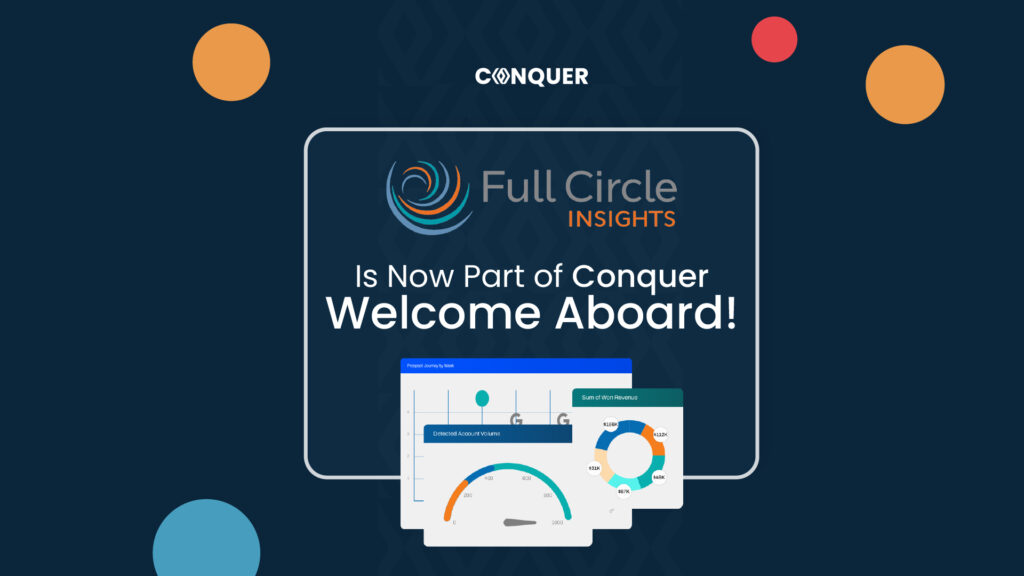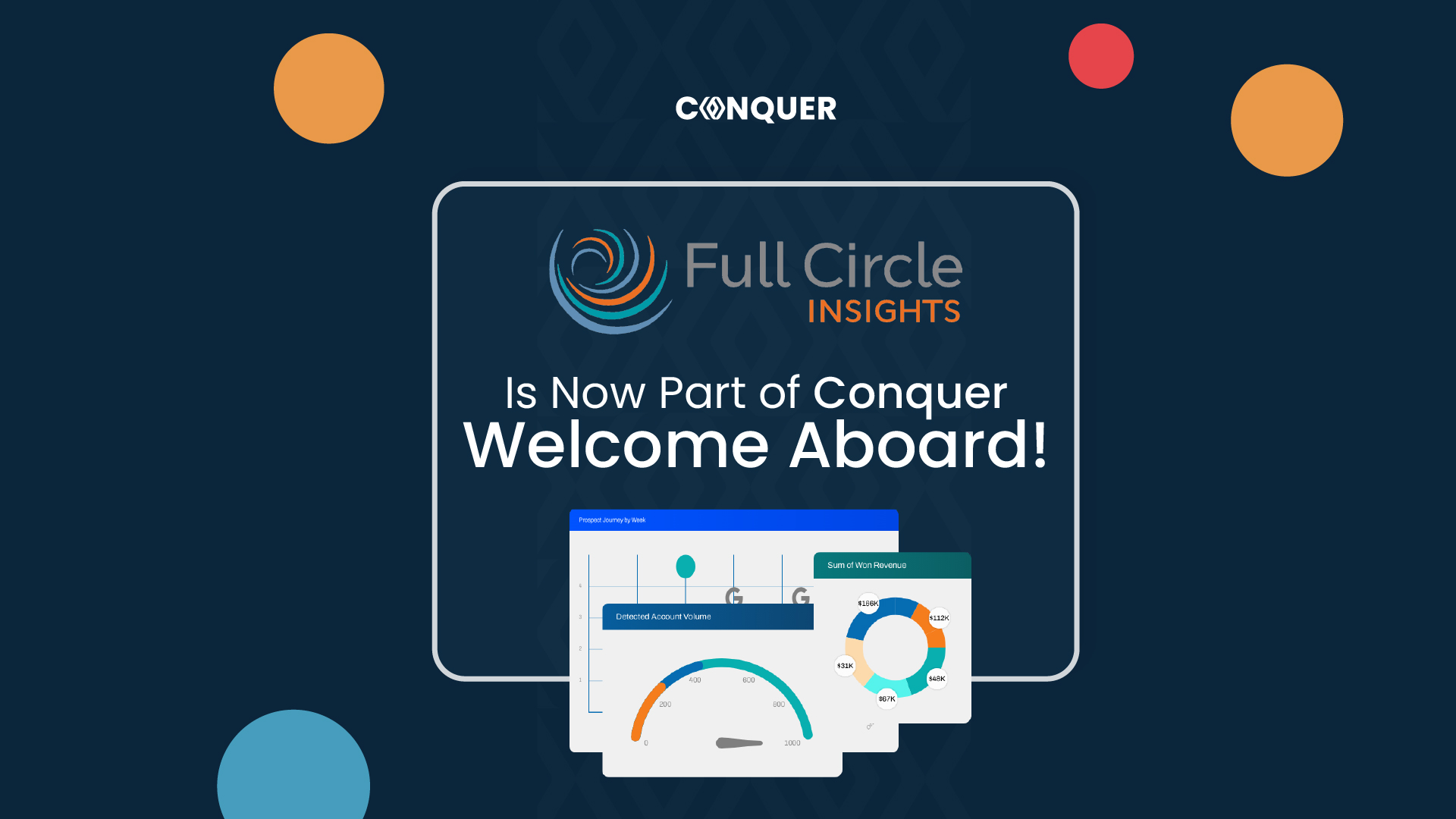Success in sales is a transformative process. It’s all about who your customer is, embracing technology, and smoothing your strategy over and over. In our latest Conquer podcast episode, we talked about the changing landscape of B2B sales and marketing and how we can leverage that change to take sales performance to a totally new level.
We also discussed the evolution of the buyer’s journey post COVID-19, and ABM’s growing importance in driving engagement. Here are the main takeaways from this podcast.
Buyers are staying behind the veil longer
One of the big shifts in B2B sales today is that buyers are spending more and more time staying “behind the veil” until they’re ready to actually engage with a sales team. The internet makes so much information accessible that enables buyers to self-educate before they ever reach out.
In fact, by the time a prospect contacts a sales representative, they are well into the buying decision process. Because of that, both sales and marketing must revisit how they conduct outreach.
It’s no longer about chasing leads. Today, it’s about being relevant to those touchpoints where buyers do their research so that when they want to make a purchase, your company is at the top of their minds.
For that, businesses need quality and relevant content to inform the buyers and gain their trust. The right content strategy will give your company thought leadership positioning and attract buyers before they are ready to engage.
ABM requires a proactive approach
Account-based marketing (ABM) was another key focus of the podcast. As Peter and Julia noted, ABM flips traditional marketing by being really proactive against specific high-value accounts rather than sitting back and waiting for the leads to come to you.
ABM demands deep insight into the target accounts, personal outreach, and full alignment of sales and marketing teams.
What’s more, for ABM to be truly effective, it is not only about targeting the right accounts but delivering the right message at the right time. This involves close alignment between sales and marketing to coordinate the messaging and timing.
In the podcast, Conquer CRO, Rick Smith also discussed how personalization extends beyond merely naming a customer’s name in an email. It goes deeper; it is actually to understand a customer’s needs, preferences, and pain points.
Just think of sending an email that not only uses the client’s first name but refers to his recent purchase or particular challenge he faces. Stuff like this develops a kind of assurance in your words and depicts a sense of concern for others.
When competition is hot, these personal touches are just what you need to make a difference and develop long-lasting relationships with your audience.
Streamlining sales processes is a must
We all know time is money, and in sales, this is even more important. In the podcast, Rick discussed how streamlining the sales process helps improve effectiveness.
As he explains it, the more your sales get bogged down with mundane and repetitive tasks, such as sending follow-up emails and setting up calls, the less time there is left for what actually matters: building relationships and closing deals.
Automation tools can be used to get the routine tasks out of the way. While freeing your time, you are equipping your team to involve themselves meaningfully with clients. Besides, a well-defined sales process helps observe bottlenecks and lagging areas.
Another important aspect here is smart insights. Having insights is almost like a secret weapon in today’s data-driven world. Rick further explained how sales leaders can leverage technology to enable their sales teams to make informed decisions. You can track KPIs and get further insight into customer behavior with the right tooling.
Sales leaders need to stay ahead of the curve
The sales landscape keeps evolving; sales leaders must learn continuously to keep up with it. Unlike in the past, where the process was more linear, today’s buyers move through multiple channels, jump back and forth between stages, and often engage with multiple touchpoints before making a purchase decision.
Among the key takeaways from our podcast, Rick details how encouraging a learning culture within your sales team is the best thing you can do. This often entails mapping the buyer’s journey and creating tailored content and touchpoints for each stage.
For example, when sales and marketing teams understand how their prospects move through the funnel, they can engage in a way that feels more personalized and less transactional.

Sales do not exist in a vacuum, and one of the more salient points made by Rick was the need for departments to cooperate. When sales teams are on good terms and working effectively with marketing and customer support, they’re able to build a much better all-around strategy that enhances the customer experience at every touch point.
Marketing shares their insight into customer behavior with the sales team, which the latter can use to refine their approach. Customer support passes common client issues on to the sales team, which the salespeople can bring up in their pitches. This communication between departments ensures a consistent message is brought to the customers.
What tools are essential for sales growth?
With some key insights on streamlining sales processes, Rick also pointed out some tools that will assist in implementing these strategies with verve. Be it CRM software, email automation, or analytics platforms, the right tools make all the difference.
For example, customer relationship management systems like Conquer are essential. These platforms help you manage interactions with your customers and track sales activities. They can also provide insight into customer history and preferences for personalized engagement.
On the other hand, email automation tools take over follow-ups and outreach via email, freeing your sales team to work on relationships rather than get bored with administrative work. Analytics software also gives leaders insight into customer behavior, informing them of their sales strategy and where to adjust.
Remember, when you choose the tools, consider what will make life easier for your team and how those solutions will impact them on a daily basis. You want to enable your sales team, not make it harder on them.
Wrapping Up
The insights shared in our latest Conquer podcast episode speak to a few key elements of sales success: personalization, streamlining processes, data-driven decisions, continuous learning, and collaboration. When applied properly, these strategies can help you bring sales success in today’s competitive sales environment.
Now, with these takeaways in your mind, think about how you could implement them within your organization. If you need more insight on how to make it all work, get the Future of Selling eBook today!








